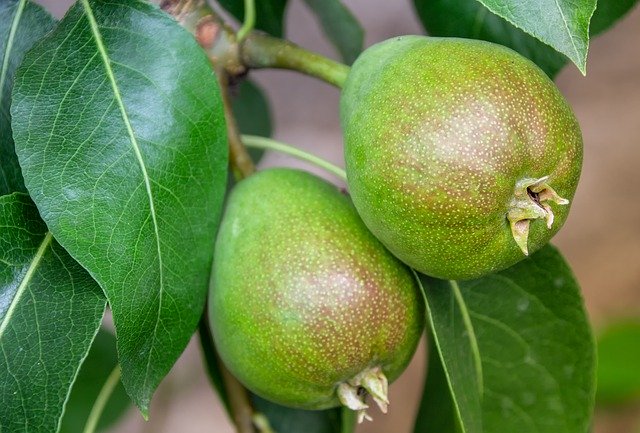
Does the grass always seem to look greener on the other side? You might believe that all your next-door neighbor has a special formula for a beautiful yard that keeps their grass and garden looking so much better than yours. The truth is there’s no secret to a lovely garden. All you need is the knowledge about how to take care for your plants properly. You can get started on your gardening knowledge today by reading the information below.
If you start to notice some powdery mildew growing on your plants, there is no need to waste money on expensive chemicals. Put a little baking soda and some dish soap in water. Once a week, spray this solution on your plants and your mildew should disappear in no time. Your plants will not be harmed by the baking soda, but the mildew will definitely not like it!
Make sure to lay the sod is laid properly.Pull all the weeds and break up any clods of soil. Make sure the soil is packed firmly and compacted. Make sure you work with a moist all the way through. Sod should be staggered in rows, where the joints connect to offset each other.
The handles of your horticulture tools can be used as clever rulers. Just run some measuring tape right on the floor then lay a yardstick beside the handle. Label the distances using a permanent marker pen.
When winter arrives, transfer a few plants into the house for safe storage during the cold weather. You should probably save the most resistant or expensive plants. Dig around the roots carefully and transfer the plant to a pot.
Moisture on plants is a sure way to attract parasites and parasites. Fungi is a very common and irritating pest in the world of horticulture. It is possible to control fungi with sprays, but it’s better to spray at-risk areas before fungi appear.
Pest control can present a major issue. One way to keep pests is to be vigilant. If you catch pests right away, you can control them just by physically removing them from your plants with your hands.
Check the soil before you plant anything in your garden. Consider getting a soil analysis and working on enrichment techniques for giving your garden a vibrant and healthy environment. Several Cooperative Extension locations offer this service, and it’s advantageous for you to know what type of soil you have, in order to avoid growing faulty crops.
Horticulture should be a great relaxation activity.There are a wide variety of things you can do to release stress and peace. Horticulture is one of the most relaxing and gratifying ways to spend your extra time. It does not have a small investment of money but has tremendous returns. The biggest dividend is the emotional satisfaction of planting and tranquility you can get from growing your very own greenery.
Bees like it because it gives them nectar in the spring.Spiders, ground beetles and other insects helpful to your garden tend to live in a heather bed, and other useful insects spend time in undisturbed heather beds. Keep this in mind and always wear appropriate horticulture gloves.
If you’re planning on gardening, carefully watch for stink bugs! You should be particularly careful during Autumn. These destructive pests enjoy many kinds of fruit, as well as beans, peppers and tomatoes. If you don’t take care of them, they can decimate your garden, so it’s best to do all you can to get rid of them.
Plant ever-bearing strawberries for your children. Children love to snap up these sweet juicy fruits for themselves and will be more willing to help you if they can pluck their own fruit from the garden.
Fill this jar up with beer to an inch below the jar’s top. Slugs will be attracted by the beer and fall into the jar once they enter.
If you would like to have flowers in your garden that last through the spring and summer seasons, plant bulbs. These are hearty choices, choices that will reward you for years despite the little effort that is involved in their care. Keep in mind that different bulb types bloom differently and at different time periods, so when you choose a bulb plan accordingly, you can have your plant blooms lasting spring into summer.
Create a raised bed for your garden out of stone, brick or untreated wood.Choose wood that is resistant to rot and is untreated. The best varieties include cedar, locust and cedar woods. In a veggie garden, avoid using treated wood to enclose or demarcate different sections of your vegetable garden. If you are already using treated lumber, you can use plastic liners, or a different barrier, be sure to line it with some type of barrier like plastic sheeting.
The suggestions in the article you just read are designed to be easy to implement in your garden. All that is necessary is to apply some of the ideas presented here and monitor their effectiveness. Just be sure to keep a close eye on your plants and see how they respond to the various methods you apply to them. If you find a method is not working for you, discontinue it and try another way. Be patient, and before long, your garden will be the envy of your neighbors.
Learn the appropriate time to pick different vegetables. Different veggies have different windows of time in which they should be picked; it is during this period that the vegetable is most flavorful. Many vegetables are best when picked young; baby peas are a prime example. Yet, in reverse, tomatoes must wait for prime-ripeness before they are subject to being picked. Take the time to learn when your produce will be at its best for harvesting.